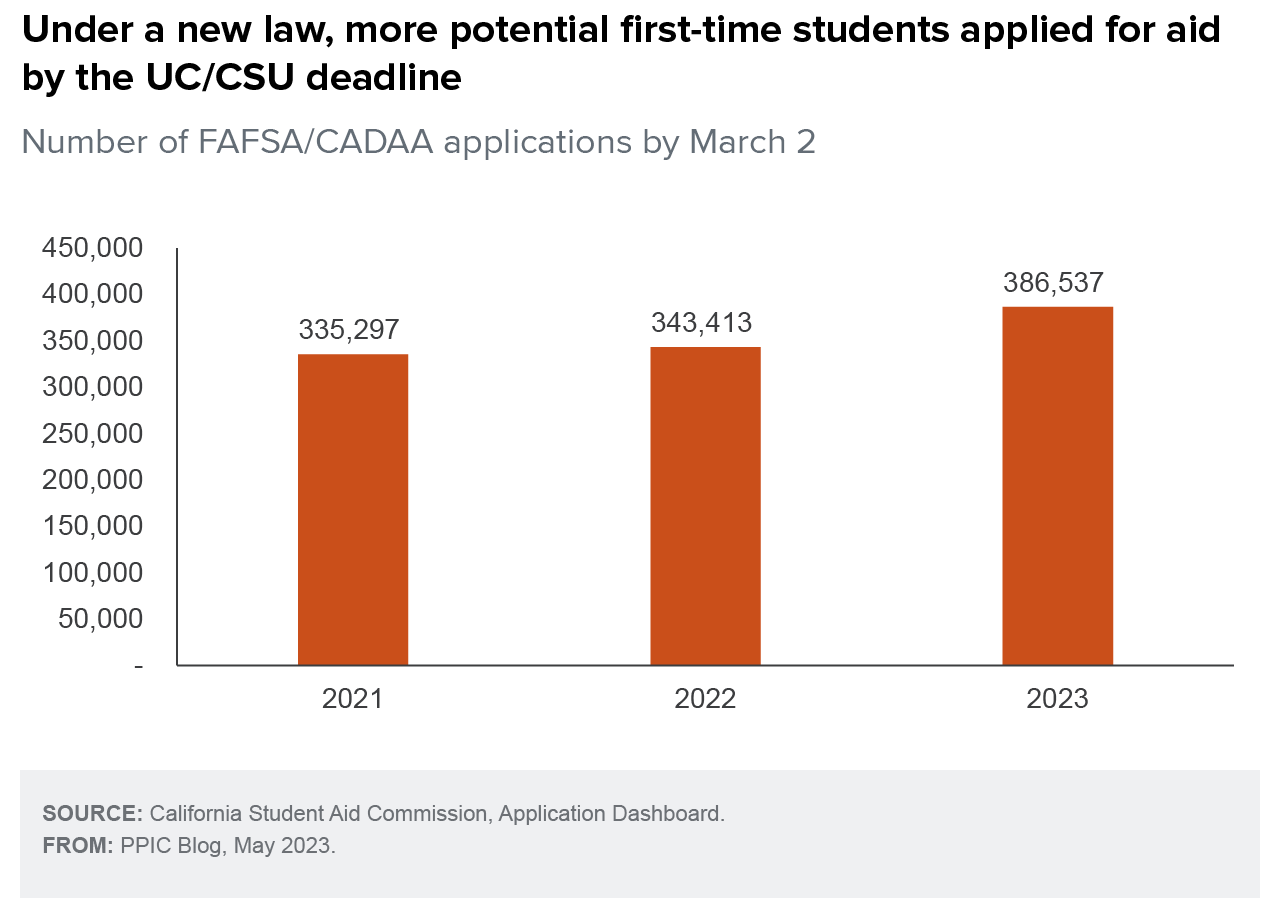As California’s high school seniors finalize their college options, costs are top of mind for families around the state. The availability of financial aid can help determine whether a student can afford to go to college in the first place—and once enrolled whether they can finish their degree. However, financial aid is not automatic: students have to apply in order to receive grant aid and loans. The good news is that under a new state law the number of students applying for aid has increased, potentially expanding college affordability for more Californians.
Federal, state, and institutional aid often combine to enable students to afford college. For example, federal Pell Grants provide up to $7,300 in grant aid—money that students don’t have to pay back—for students from lower-income families. California also provides one of the most generous financial aid programs in the nation, Cal Grants, that can cover a student’s entire tuition (and sometimes other costs) at public state colleges. The program also provides up to $9,200 to attend private schools in the state.
However, too few of California’s graduating high school seniors are able to access this aid because they do not submit the necessary applications. Submission of the Free Application for Federal Student Aid (FAFSA) allows low-income students to access federal Pell grants, work-study programs, and subsidized loans, as well as state and institutional financial aid.
Despite the critical role of the FASFA, only 50% of California’s high school seniors completed one in the 2021–22 academic year. California missed out on more than $560 million in federal financial aid dollars because of the low level of applications, according to estimates from the National College Attainment Network.
To address this issue California recently passed AB 469, which mandates that school districts ensure graduating seniors complete the FAFSA or the California Dream Act Application (CADAA)—or formally opt out. Preliminary research investigating other states and school districts where FAFSA completion is already mandatory has shown promising results.
For example, Val Verde school district in Riverside California, which made FAFSA completion a graduation requirement in 2017–18, found that in the first year of implementation alone, FAFSA/CADAA completion increased from 69% to 83%. We see similar results from state level FAFSA mandates. Louisiana, which implemented a FAFSA completion requirement in 2019–20, saw its FAFSA completions increase by 25% in the first year of implementation—and the state currently leads the nation in the share of high school seniors who complete the FAFSA.
In California, school districts are currently implementing the first year of the policy, and results are promising. March 2, which is the deadline for UC and CSU aid, showed an increase of more than 43,000 additional financial aid applications from students who had not yet attended college—a 12% increase over last year. For California’s students and their families, the potential impact of these gains could be life changing, spreading the many benefits of a college degree more broadly across our diverse state.

This is an encouraging start, but much more progress can be made. The California Student Aid Commission provides in-depth online support for all California students. Next up, community college students will be working toward a September 2 deadline for the FASFA/CADAA, another critical datapoint for examining the reach of the new mandate.
PPIC is doing further research into the first year of mandated financial aid applications and will continue to study impacts on enrollment and persistence as aid recipients enter college.
Topics
Access Affordability Cal Grants Equity FAFSA financial aid Higher Education Poverty & InequalityLearn More

New FAFSA Form May Trigger Drop in College Enrollment

Tuition at CSU and UC Is Growing—but So Is Aid

Geography of College Aid in California

Keeping College Affordable for California Students

A New UC Tuition Policy Could Provide Predictability, but at a Cost



